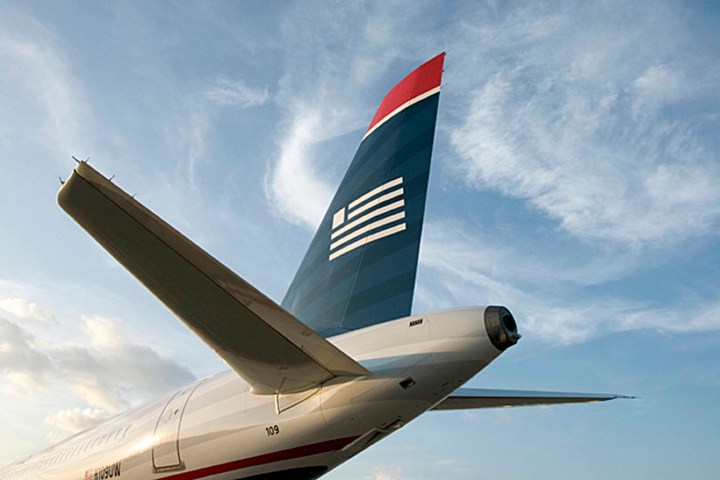
Legacy carriers in the U.S. are oftentimes viewed as the dinosaurs of the industry – stuck in their old ways, saddled by politics, and slow to implement tech. And while they may not have the “wow” factor of some new carriers today, they had notable tech moments in their history. As we bid farewell to this storied airline (the modern US Airways is actually a conglomeration of several defunct carriers, each with its own personality), here’s a look back at some of the airline’s achievements toward air travel (and one not so stellar moment in its tech history).
Airmail pick-up system
US Airways didn’t exist as a brand until 1979, but its history stems back to 1937, when it was first known as All American Aviation and provided airmail service for the U.S. Post Office. AAA developed patents, and one invention saw its planes outfitted with a tail-hook system for picking up mailbags as the plane flew over. During World War II, AAA’s R&D team modified the system that allowed planes to quickly pull spies out of enemy territory.
Birth of modern air travel

After World War II, All American Aviation changed its name to All American Airways when it switched from being a mail carrier to one that ferried people, as did other airmail carriers. As the airline added larger planes to its fleet, like the DC-3, more and more civilians were now flying around the country. In 1953, All American Airways changed its name again and became Allegheny Airlines.
First code-share agreement

In 1967, Allegheny Airlines entered into a partnership with Henson Aviation (precursor to Piedmont Airlines), which is essentially what is now known as a code-share agreement. This allows one airline to sell seats on a partner’s flight, and vice versa. While this is a common practice today, it was an innovative concept then.
Fun, sexy, and affordable
One airline that merged into USAir was Pacific Southwest Airlines, based in San Diego. Popular with passengers, the airline had the slogan, “The World’s Friendliest Airline,” and painted smiles on its planes. Its low fares were popular with people in the military, who dubbed PSA as “Poor Sailor’s Airline.” Its flight attendants’ uniforms included miniskirts. On the tech side, the airline is one of the first to introduce automated ticketing. PSA is considered the first low-cost airline; in creating Southwest Airlines (unrelated), founder Herb Kelleher tailored its business model after PSA’s. No wonder why Southwest is also popular with fliers. Unfortunately, USAir did not carry over this success. US Airways has one of its planes painted in the PSA design scheme as part of its heritage fleet, including the trademark smile.
Boeing 737-300 launch
All-American Airways became Allegheny Airlines, and after deregulation in 1979, it became USAir. The airline was the launch customer for a new generation of Boeing’s 737. By the time Boeing delivered the 737-300 to the airline, in 1984, the 737 family of planes was already the most-ordered aircraft. USAir worked with Boeing to develop the 737-300, which offered higher capacity, increased range, fuel economy, and noise reduction. Although the airline phased out this aircraft from its fleet, the 737-300 is still in operation.
Miracle on the Hudson

Who could forget the incredible water landing of Flight 1549, when Captain Chesley “Sully” Sullenberger and his crew made a successful emergency landing on the Hudson River in New York City, and safely evacuated everyone onboard. This, perhaps, could be US Airways’ greatest legacy, thanks to its well-trained crew’s heroic efforts.
Twitter fail

Like most airlines, US Airways used social media to engage with customers. However, an unfortunate incident in 2014 had the company issuing an apology after an explicit photo was accidentally tweeted to a customer. Although the airline was not at fault, it demonstrates the perils of conducting business through social media.




